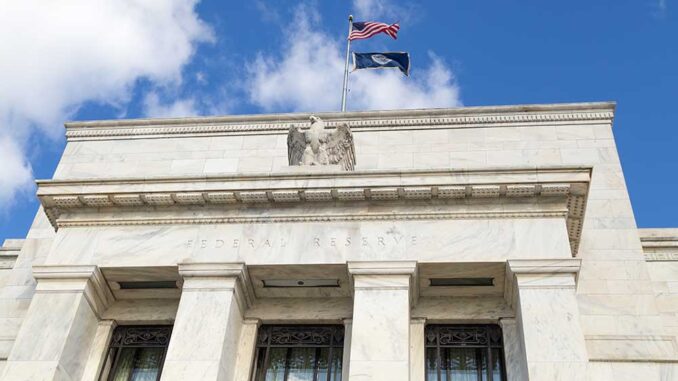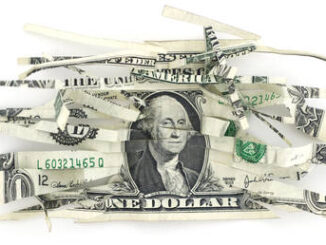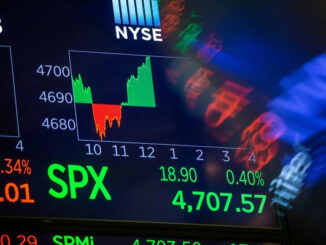
The Federal Reserve’s data-dependence might suggest that a more mild jobs report on Friday and tamer CPI inflation reading next week could still result in just a quarter-point rate hike on March 22. Don’t bet on it. Fed chair Jerome Powell’s Senate testimony, which socked the S&P 500 rally in the gut on Tuesday, almost ruled out such an outcome.
Powell’s key line: “If the totality of the data were to indicate that faster tightening is warranted, we would be prepared to increase the pace of rate hikes.”
Because recent economic reports have been so hot, even a couple of cooler reports won’t lower the temperature of the “totality of the data” enough to satisfy the Fed.
The S&P 500 turned solidly lower again in Thursday stock market action, despite jobless claims rising more than expected to 211,000 in the week through March 4. If tomorrow’s jobs report comes in softer than expected, an S&P 500 bounce may be in the cards. However, it would take a truly awful report to alter the hawkish Fed consensus that will pressure stocks near-term.
Jobs Report Forecast
Wall Street economists expect the February jobs report to show employers added 220,000 jobs. Yet coming after January’s 517,000 gain, even a big downside surprise of, say, 100,000 new jobs would still mean the economy added more than 300,000 jobs in each of the first two months of the year — way too strong for the Fed.
The jobless rate is expected to hold at a 53-year-low 3.4%. Average hourly wage growth is expected to rise a moderate 0.3% on the month. However, wage inflation is seen rising to 4.7% from 4.4% in February, as a rare month of flat wage growth in February 2022 drops out of the 12-month total.
Powell acknowledged that unseasonably warm weather likely provides a partial explanation for why softer economic trends late in 2022 heated up in January. However, Deutsche Bank economists are forecasting a 300,000 payroll gain because weather also was unusually warm in mid-February, during the week of the Labor Department’s monthly employer survey.
The “payback” for strong hiring due to warm weather should come between March and May, wrote Jefferies chief financial economist Aneta Markowska.
The upshot: There’s not enough time or data left for the Fed to back down from a half-point rate hike on March 22.
Powell: Little Sign Of Services Disinflation
The same likely applies to inflation data. On Tuesday, Powell said he sees “little sign of disinflation” in core nonhousing services, which accounts for about half of personal consumption expenditures or PCE.
In January, core PCE services prices ex housing rose 0.6% on the month, the fastest since November 2021, and 4.65% from a year ago. The 3-month annualized inflation rate in this category heated up to 5.3%.
The Fed won’t see the February PCE inflation data until after their March 22 policy decision. The consumer price index due out on March 14 will provide some hints. However, a single month of data is unlikely to substantially change opinions.
Fed Rate-Hike Outlook
Odds of a half-point hike at the Fed meeting in two weeks surged from 30% on Monday to nearly 72% now. Conceivably, those odds might drift lower if Friday’s jobs report and next Tuesday’s CPI are cooler than expected.
Yet the hurdle for the Fed to settle for a quarter-point hike is extremely high. There are two reasons why.
First, Fed officials believe the costs of not hiking enough are much greater than the costs of hiking too much. The longer this bout of high inflation lasts, the harder it may be to quell it. That is the lesson of 15-year bout of high inflation that lasted from the late 1960s to the early 1980s, Powell has said. While the Fed doesn’t want a recession, officials don’t lose sleep over it, because the Fed has had good success reviving a sick economy with rate cuts and asset purchases.
Second, until recently, Fed officials had pretty much failed to convince markets that rates would move higher and stay there for longer. That had consequences. Treasury yields fell, lowering borrowing costs and helping give the economy a second wind. Now that markets are finally listening to the Fed, policymakers probably won’t want to hike less than markets are betting, because that would allow for easier financial conditions.
What It Means For S&P 500
The Fed wants a slowdown, the sooner the better. When it comes, S&P 500 earnings are likely to take a hit well before easier Fed policy comes to the rescue.
The S&P 500 fell 1% Thursday afternoon, after managing to scratch out a slim 0.1% gain in Wednesday’s stock market action. That followed Tuesday’s 1.5% slide that saw the S&P 500 break through its 50-day moving average. On Thursday, the S&P 500 fell further below its 50-day line near 4000. A decisive break of the 200-day moving average, near 3940, would put the S&P 500’s rally in jeopardy.
As of Wednesday’s close, the S&P 500 was 16.8% below its record closing high but still up 11.6% from its bear-market closing low on Oct. 12.
Meanwhile, the 10-year Treasury yield bumped back up against 4% early Thursday, easing back to 3.90% after the rise in jobless claims. Short-term Treasury yields with maturities of up to one year still top 5%, meaning the yield curve is inverted to an extent that is flashing a high recession risk.
Be sure to read IBD’s The Big Picture each day to stay in sync with the market’s underlying trend and what it means for your trading decisions.
YOU MAY ALSO LIKE:
These Are The Best 5 Stocks To Buy And Watch Right Now
Join IBD Live And Learn Top Chart-Reading And Trading Techniques From The Pros
Catch The Next Winning Stock With MarketSmith
How To Make Money In Stocks In 3 Simple Steps
The post Why Friday’s Jobs Report Won’t Save The S&P 500 From Fed Hawks appeared first on Investor’s Business Daily.



